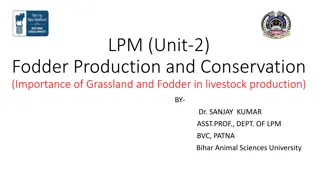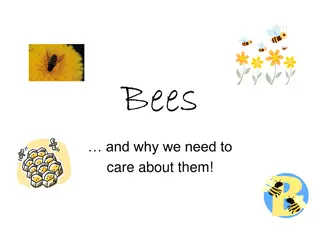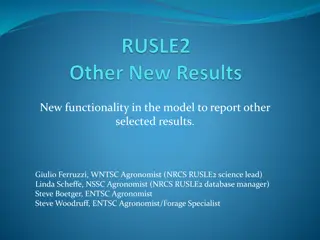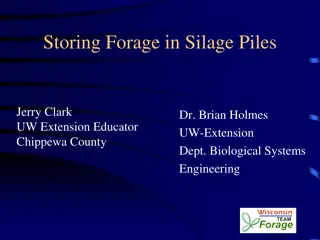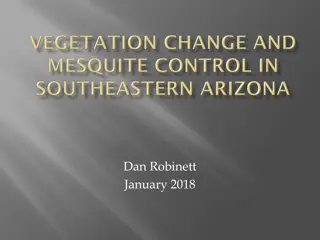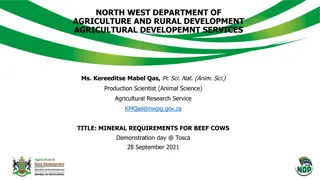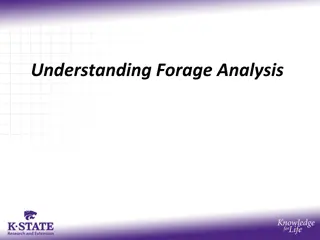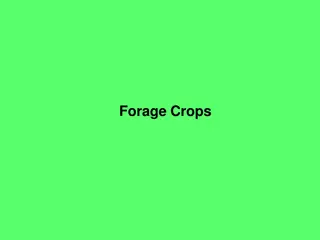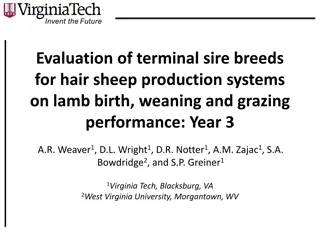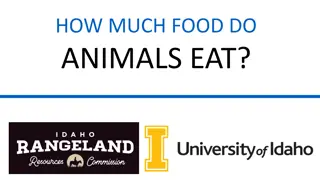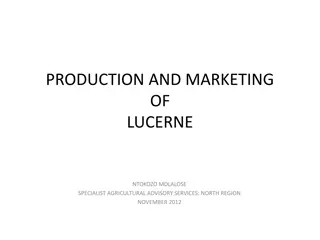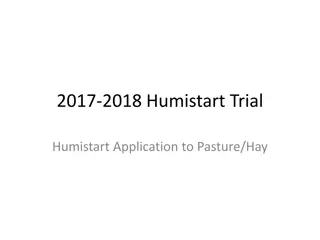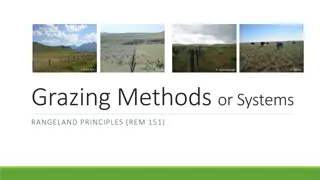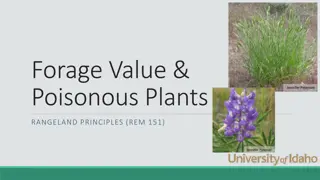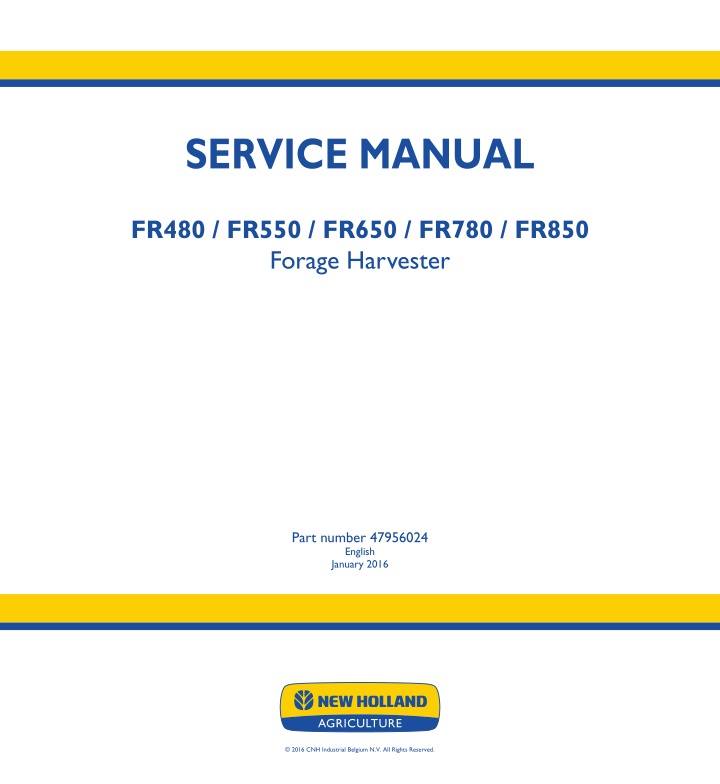
New Holland FR780 Forage Harvester Service Repair Manual Instant Download
New Holland FR780 Forage Harvester Service Repair Manual Instant Download
Download Presentation

Please find below an Image/Link to download the presentation.
The content on the website is provided AS IS for your information and personal use only. It may not be sold, licensed, or shared on other websites without obtaining consent from the author. If you encounter any issues during the download, it is possible that the publisher has removed the file from their server.
You are allowed to download the files provided on this website for personal or commercial use, subject to the condition that they are used lawfully. All files are the property of their respective owners.
The content on the website is provided AS IS for your information and personal use only. It may not be sold, licensed, or shared on other websites without obtaining consent from the author.
E N D
Presentation Transcript
SERVICE MANUAL SERVICE MANUAL FR480 / FR550 / FR650 / FR780 / FR850 Forage Harvester FR480 FR550 FR650 FR780 FR850 Forage Harvester 1/5 Part number 47956024 English January 2016 Part number 47956024 2016 CNH Industrial Belgium N.V. All Rights Reserved.
SERVICE MANUAL FR480 Forage Cruiser Cursor 13, TIER 4B FR550 Forage Cruiser Cursor 13, TIER 4B FR650 Forage Cruiser Cursor 16, TIER 4B FR780 Forage Cruiser Cursor 16, TIER 4B FR850 Forage Cruiser Vector, TIER2 47956024 15/02/2016 EN
Link Product / Engine Product Market Product Europe Engine FR480 Forage Cruiser Cursor 13, TIER 4B FR550 Forage Cruiser Cursor 13, TIER 4B FR650 Forage Cruiser Cursor 16, TIER 4B FR780 Forage Cruiser Cursor 16, TIER 4B FR850 Forage Cruiser Vector, TIER2 F3HFE613H*B007 Europe F3H FE613F*B007 Europe F3JFE613A*B005 Europe F3JFE613B*B006 Europe FVAE2884X*B200 47956024 15/02/2016
https://www.ebooklibonline.com Hello dear friend! Thank you very much for reading. Enter the link into your browser. The full manual is available for immediate download. https://www.ebooklibonline.com
Contents INTRODUCTION Engine....................................................................................... 10 [10.001] Engine and crankcase ............................................................. 10.1 [10.218] Fuel injection system............................................................... 10.2 [10.400] Engine cooling system ............................................................. 10.3 [10.414] Fan and drive ...................................................................... 10.4 [10.418] Rotary screen ...................................................................... 10.5 Main gearbox and drive............................................................... 14 [14.100] Main gearbox and drive ............................................................ 14.1 Transmission.............................................................................. 21 [21.114] Mechanical transmission ........................................................... 21.1 [21.120] Gearbox............................................................................ 21.2 [21.130] Mechanical transmission external controls......................................... 21.3 [21.100] Mechanical transmission lubrication system ....................................... 21.4 [21.145] Gearbox internal components...................................................... 21.5 [21.182] Differential.......................................................................... 21.6 Four-Wheel Drive (4WD) system .................................................. 23 [23.101] Mechanical control ................................................................. 23.1 [23.304] Four-Wheel Drive (4WD) gearbox ................................................. 23.2 Front axle system ....................................................................... 25 [25.100] Powered front axle ................................................................. 25.1 [25.102] Front bevel gear set and differential ............................................... 25.2 [25.310] Final drives......................................................................... 25.3 Rear axle system........................................................................ 27 [27.450] Rear-powered steerable axle ...................................................... 27.1 [27.550] Non-powered rear axle............................................................. 27.2 47956024 15/02/2016
Hydrostatic drive......................................................................... 29 [29.100] Transmission and steering hydrostatic control..................................... 29.1 [29.218] Pump and motor components...................................................... 29.2 [29.202] Hydrostatic transmission ........................................................... 29.3 Brakes and controls .................................................................... 33 [33.202] Hydraulic service brakes ........................................................... 33.1 [33.110] Parking brake or parking lock ...................................................... 33.2 Hydraulic systems....................................................................... 35 [35.000] Hydraulic systems.................................................................. 35.1 [35.102] Pump control valves................................................................ 35.2 [35.106] Variable displacement pump ....................................................... 35.3 [35.204] Remote control valves ............................................................. 35.4 [35.300] Reservoir, cooler, and filters........................................................ 35.5 [35.359] Main control valve.................................................................. 35.6 [35.350] Safety and main relief valves ...................................................... 35.7 [35.600] High flow hydraulics................................................................ 35.8 [35.410] Header or attachment height system .............................................. 35.9 [35.602] Header or attachment leveling system........................................... 35.10 [35.514] Upper feed roll gearbox system.................................................. 35.11 [35.516] Cutterhead drive system ......................................................... 35.12 [35.530] Spout rotation circuit ............................................................. 35.13 [35.532] Spout raising system............................................................. 35.14 [35.534] Spout deflector system........................................................... 35.15 Steering..................................................................................... 41 [41.101] Steering control .................................................................... 41.1 [41.200] Hydraulic control components...................................................... 41.2 [41.206] Pump............................................................................... 41.3 [41.216] Cylinders ........................................................................... 41.4 47956024 15/02/2016
[41.432] Autoguidance steering ............................................................. 41.5 Wheels...................................................................................... 44 [44.511] Front wheels........................................................................ 44.1 [44.520] Rear wheels........................................................................ 44.2 Cab climate control..................................................................... 50 [50.100] Heating............................................................................. 50.1 [50.200] Air conditioning..................................................................... 50.2 Electrical systems....................................................................... 55 [55.000] Electrical system ................................................................... 55.1 [55.100] Harnesses and connectors......................................................... 55.2 [55.015] Engine control system.............................................................. 55.3 [55.010] Fuel injection system............................................................... 55.4 [55.014] Engine intake and exhaust system................................................. 55.5 [55.012] Engine cooling system ............................................................. 55.6 [55.013] Engine oil system .................................................................. 55.7 [55.301] Alternator........................................................................... 55.8 [55.512] Cab controls........................................................................ 55.9 [55.640] Electronic modules............................................................... 55.10 [55.610] Ground speed control ............................................................ 55.11 [55.019] Hydrostatic drive control system ................................................. 55.12 [55.051] Cab Heating, Ventilation, and Air-Conditioning (HVAC) controls................. 55.13 [55.050] Heating, Ventilation, and Air-Conditioning (HVAC) control system............... 55.14 [55.421] Feeding control system .......................................................... 55.15 [55.820] Chopping and cutting control systems ........................................... 55.16 [55.830] Rotary screen drive and cleaning ................................................ 55.17 [55.680] Autopilot/Autoguidance .......................................................... 55.18 [55.450] Ejecting control system .......................................................... 55.19 [55.408] Warning indicators, alarms, and instruments .................................... 55.20 47956024 15/02/2016
[55.DTC] FAULT CODES.................................................................. 55.21 Attachments/Headers.................................................................. 58 [58.900] Belt feeding ........................................................................ 58.1 Product feeding.......................................................................... 60 [60.103] Lower feed rolls .................................................................... 60.1 [60.107] Upper feed rolls .................................................................... 60.2 [60.155] Metal detector...................................................................... 60.3 Chopping................................................................................... 64 [64.100] Cutterhead ......................................................................... 64.1 [64.106] Drum ............................................................................... 64.2 [64.130] Drum gearbox...................................................................... 64.3 [64.140] Sharpening system................................................................. 64.4 [64.150] Shearbar ........................................................................... 64.5 [64.160] Crop processor..................................................................... 64.6 [64.170] Transition channel/concave and lever ............................................. 64.7 Ejection..................................................................................... 70 [70.120] Blower.............................................................................. 70.1 [70.140] Spout............................................................................... 70.2 Platform, cab, bodywork, and decals............................................. 90 [90.105] Machine shields and guards ....................................................... 90.1 [90.150] Cab................................................................................. 90.2 [90.151] Cab interior......................................................................... 90.3 47956024 15/02/2016
INTRODUCTION 47956024 15/02/2016 1
INTRODUCTION Basic instructions - How to use and navigate through this Manual WE WE WE WE WE FR480 Forage Cruiser FR550 Forage Cruiser FR650 Forage Cruiser FR780 Forage Cruiser FR850 Forage Cruiser Technical information This manual has been produced by a new technical information system. This new system is designed to deliver technical information electronically through Web delivery (eTim), DVD and in paper manuals. A coding system called SAP has been developed to link the technical information to other Product Support functions, e.g., Warranty. Technical information is written to support the maintenance and service of the functions or systems on a customer's machine. When a customer has a concern on his machine it is usually because a function or system on his machine is not working at all, is not working efficiently, or is not responding correctly to his commands. When you refer to the technical information in this manual to resolve that customer's concern, you will find all the information classified using the SAP coding, according to the functions or systems on that machine. Once you have located the technical information for that function or system then you will find all the mechanical, electrical or hydraulic devices, compo- nents, assemblies and sub assemblies for that function or system. You will also find all the types of information that have been written for that function or system, the technical data (specifications), the functional data (how it works), the diagnostic data (fault codes and troubleshooting) and the service data (remove, install adjust, etc.). By integrating SAP coding into technical information, you will be able to search and retrieve just the right piece of technical information you need to resolve that customer's concern on his machine. This is made possible by attaching 3 categories to each piece of technical information during the authoring process. The first category is the Location, the second category is the Information Type and the third category is the Product: LOCATION - is the component or function on the machine, that the piece of technical information is going to describe e.g. Fuel tank. INFORMATION TYPE - is the piece of technical information that has been written for a particular component or function on the machine e.g. Capacity would be a type of Technical Data that would describe the amount of fuel held by the Fuel tank. PRODUCT - is the model for which the piece of technical information is written. Every piece of technical information will have those 3 categories attached to it. You will be able to use any combination of those categories to find the right piece of technical information you need to resolve that customer's concern on his machine. That information could be: the description of how to remove the cylinder head a table of specifications for a hydraulic pump a fault code a troubleshooting table a special tool 47956024 15/02/2016 3
INTRODUCTION How to use this manual This manual is divided into Sections. Each Section is then divided into Chapters. Contents pages are included at the beginning of the manual, then inside every Section and inside every Chapter. An alphabetical Index is included at the end of a Chapter. Page number references are included for every piece of technical information listed in the Chapter Contents or Chapter Index. Each Chapter is divided into four Information types: Technical Data (specifications) for all the mechanical, electrical or hydraulic devices, components and, assemblies. Functional Data (how it works) for all the mechanical, electrical or hydraulic devices, components and assemblies. Diagnostic Data (fault codes, electrical and hydraulic troubleshooting) for all the mechanical, electrical or hydraulic devices, components and assemblies. Service Data (remove disassembly, assemble, install) for all the mechanical, electrical or hydraulic devices, com- ponents and assemblies. Sections Sections are grouped according to the main functions or a systems on the machine. Each Section is identified by a number 00, 35, 55, etc. The amount of Sections included in the manual will depend on the type and function of the machine that the manual is written for. Each Section has a Contents page listed in alphabetic/numeric order. This table illustrates which Sections could be included in a manual for a particular product. PRODUCT Tractors Vehicles with working arms: backhoes, excavators, skid steers, . Combines, forage harvesters, balers, . Seeding, planting, floating, spraying equipment, . Mounted equipment and tools, . SECTION 00 - Maintenance 05 - Machine completion and equipment 10 - Engine 14 - Main gearbox and drive 18 - Clutch 21 - Transmission 23 - Four wheel drive system 25 - Front axle system 27 - Rear axle system 29 - Hydrostatic drive 31 - Implement power take-off 33 - Brakes and controls 35 - Hydraulic systems 36 - Pneumatic system 37 - Hitches, drawbars and implement couplings 39 - Frames and ballasting 41 - Steering 44 - Wheels 46 - Steering clutches 48 - Tracks and track suspension 50 - Cab climate control 55 - Electrical systems 56 - Grape harvester shaking 58 - Attachments/headers 60 - Product feeding 61 - Metering system 62 - Pressing - Bale formation 47956024 15/02/2016 4
INTRODUCTION 63 - Chemical applicators 64 - Chopping 66 - Threshing 68 - Tying/Wrapping/Twisting 69 - Bale wagons 70 - Ejection 71 - Lubrication system 72 - Separation 73 - Residue handling 74 - Cleaning 75 - Soil preparation/Finishing 76 - Secondary cleaning / Destemmer 77 - Seeding 78 - Spraying 79 - Planting 80 - Crop storage / Unloading 82 - Front loader and bucket 83 - Telescopic single arm 84 - Booms, dippers and buckets 86 - Dozer blade and arm 88 - Accessories 89 - Tools 90 - Platform, cab, bodywork and decals 47956024 15/02/2016 5
INTRODUCTION Safety rules WE WE WE WE WE FR480 Forage Cruiser FR550 Forage Cruiser FR650 Forage Cruiser FR780 Forage Cruiser FR850 Forage Cruiser Personal safety This is the safety alert symbol. It is used to alert you to potential personal injury hazards. Obey all safety messages that follow this symbol to avoid possible death or injury. Throughout this manual you will find the signal words DANGER, WARNING, and CAUTION followed by special in- structions. These precautions are intended for the personal safety of you and those working with you. Read and understand all the safety messages in this manual before you operate or service the machine. DANGER indicates a hazardous situation that, if not avoided, will result in death or serious injury. WARNING indicates a hazardous situation that, if not avoided, could result in death or serious injury. CAUTION indicates a hazardous situation that, if not avoided, could result in minor or moderate injury. FAILURE TO FOLLOW DANGER, WARNING, AND CAUTION MESSAGES COULD RESULT IN DEATH OR SERIOUS INJURY. Machine safety NOTICE: Notice indicates a situation that, if not avoided, could result in machine or property damage. Throughout this manual you will find the signal word Notice followed by special instructions to prevent machine or property damage. The word Notice is used to address practices not related to personal safety. Information NOTE: Note indicates additional information that clarifies steps, procedures, or other information in this manual. Throughout this manual you will find the word Note followed by additional information about a step, procedure, or other information in the manual. The word Note is not intended to address personal safety or property damage. 47956024 15/02/2016 12
INTRODUCTION Safety rules - Ecology and the environment WE WE WE WE WE FR480 Forage Cruiser FR550 Forage Cruiser FR650 Forage Cruiser FR780 Forage Cruiser FR850 Forage Cruiser Soil, air, and water quality is important for all industries and life in general. When legislation does not yet rule the treatment of some of the substances that advanced technology requires, sound judgment should govern the use and disposal of products of a chemical and petrochemical nature. Familiarize yourself with the relative legislation applicable to your country, and make sure that you understand this legislation. Where no legislation exists, obtain information from suppliers of oils, filters, batteries, fuels, anti-freeze, cleaning agents, etc., with regard to the effect of these substances on man and nature and how to safely store, use, and dispose of these substances. Helpful hints Avoid the use of cans or other inappropriate pressurized fuel delivery systems to fill tanks. Such delivery systems may cause considerable spillage. In general, avoid skin contact with all fuels, oils, acids, solvents, etc. Most of these products contain substances that may be harmful to your health. Modern oils contain additives. Do not burn contaminated fuels and or waste oils in ordinary heating systems. Avoid spillage when you drain fluids such as used engine coolant mixtures, engine oil, hydraulic fluid, brake fluid, etc. Do not mix drained brake fluids or fuels with lubricants. Store all drained fluids safely until you can dispose of the fluids in a proper way that complies with all local legislation and available resources. Do not allow coolant mixtures to get into the soil. Collect and dispose of coolant mixtures properly. The air-conditioning system contains gases that should not be released into the atmosphere. Consult an air-condi- tioning specialist or use a special extractor to recharge the system properly. Repair any leaks or defects in the engine cooling system or hydraulic system immediately. Do not increase the pressure in a pressurized circuit as this may lead to a component failure. Protect hoses during welding. Penetrating weld splatter may burn a hole or weaken hoses, allowing the loss of oils, coolant, etc. Battery recycling Batteries and electric accumulators contain several substances that can have a harmful effect on the environment if the batteries are not properly recycled after use. Improper disposal of batteries can contaminate the soil, groundwater, and waterways. NEW HOLLAND strongly recommends that you return all used batteries to a NEW HOLLAND dealer, who will dispose of the used batteries or recycle the used batteries properly. In some countries, this is a legal requirement. Mandatory battery recycling NOTE: The following requirements are mandatory in Brazil. Batteries are made of lead plates and a sulfuric acid solution. Because batteries contain heavy metals such as lead, CONAMA Resolution 401/2008 requires you to return all used batteries to the battery dealer when you replace any batteries. Do not dispose of batteries in your household garbage. Points of sale are obliged to: Accept the return of your used batteries Store the returned batteries in a suitable location Send the returned batteries to the battery manufacturer for recycling 47956024 15/02/2016 13
INTRODUCTION Safety rules WE WE WE WE WE FR480 Forage Cruiser FR550 Forage Cruiser FR650 Forage Cruiser FR780 Forage Cruiser FR850 Forage Cruiser LEGAL OBLIGATIONS This machine may be equipped with special guarding or other devices in compliance with local legislation. Some to these require active use by the operator. Therefor, check local legislations on the usage of this machine. ACCIDENT PREVENTION Most accidents or injuries that occur in workshops are the result of non compliance to simple and fundamental safety principles. For this reason, IN MOST CASES THESE ACCIDENTS CAN BE AVOIDED by applying the fundamental safety principles, acting with the necessary caution and care. Accidents may occur with all types of machine, regardless of how well the machine in question was designed and built. CAUTION Unexpected machine movement! 1. Disengage all drives. 2. Engage parking brake. 3. Lower all attachments to the ground, or raise and engage all safety locks. 4. Shut off engine. 5. Remove key from key switch. 6. Switch off battery key, if installed. 7. Wait for all machine movement to stop. Failure to comply could result in minor or moderate injury. C0038A SAFETY REQUIREMENTS FOR FLUID POWER SYSTEMS AND COMPONENTS - HY- DRAULICS (EUROPEAN STANDARD EN982) Flexible hose assemblies must not be constructed from hoses which have been previously used as part of a hose assembly. Do not weld hydraulic pipes: when flexible hoses or piping are damaged, replace them immediately. It is forbidden to modify a hydraulic accumulator by machining, welding or any other way. Before removing hydraulic accumulators for servicing, the liquid pressure in the accumulators must be reduced to zero. Pressure check on hydraulic accumulators must be carried out by a method recommended by the accumulator manufacturer. Take care not to exceed the maximum allowed pressure of the accumulator. After any check or adjustment, check for leakages or gas in the hoses or tubes. SAFETY RULES General guidelines Carefully follow specified repair and maintenance procedures. When appropriate, use P.P.E (Personal Protective Equipment) Do not wear rings, wristwatches, jewellery, unbuttoned or loose articles of clothing such as: ties, torn clothing, scarves, open jackets or shirts with open zips that may remain entangled in moving parts. It is advised to wear approved safety clothing, e.g.: non-slip footwear, gloves, safety goggles, helmets, etc. 47956024 15/02/2016 14
INTRODUCTION Do not carry out repair operations with someone sitting in the driver's seat, unless the person is a trained technician who is assisting with the operation in question. Do not operate the machine or use any of the implements from different positions, other than the driver's seat. Do not carry out operations on the machine with the engine running, unless specifically indicated. Bring all hydraulic cylinders to the home positions (down, retracted, etc.) before engine shut down. Stop the engine and check that the hydraulic circuits are pressure-free before removing caps, covers, valves, etc. All repair and maintenance operations must be carried out using extreme care and attention. Service steps and platforms used in the workshop or elsewhere should be built according to the applicable stan- dards and legislation. Disconnect the Power Take-Off (PTO) and label the controls to indicate that the machine is being serviced. Brakes are inoperative when manually released for repair or maintenance purposes. Use blocks or similar devices to secure the machine in these conditions. Only use specified towing points for towing the machine. Connect parts carefully. Make sure that all pins and/or locks are secured in position before applying traction. Never remain near the towing bars, cables or chains that are operating under load. When loading or unloading the machine from the trailer (or other means of transport), select a flat area capable of sustaining the trailer or truck wheels. Firmly secure the machine to the truck or trailer and lock the wheels in the position used by the carrier. Electric heaters, battery-chargers and similar equipment must only be powered by auxiliary power supplies with efficient ground insulation to avoid electrical shock hazards. Always use suitable hoisting or lifting devices when raising or moving heavy parts. Keep bystanders away. Never use gasoline, diesel oil or other inflammable liquids as cleaning agents. Use non-inflammable, non toxic commercially available solvents. Wear safety goggles with side guards when cleaning parts with compressed air. Never use open flames for lighting when working on the machine or checking for leaks. When carrying out checks with the engine running, request the assistance of an operator in the driver's seat. The operator must maintain visual contact with the service technician at all times. If operating outside the workshop, position the machine on a flat surface and lock in position. If working on a slope, lock the machine in position. Move to a flat area as soon as is safely possible. Maintenance and repair operations must be carried out in a clean and dry area. Clean up any water or oil spillage immediately. Do not create piles of oil or grease-soaked rags as they represent a serious fire hazard. Always store rags in a closed metal container. Before engaging the machine, make sure that there are no persons within the machine or implement range of action. Empty your pockets of all objects that may fall accidentally unobserved into the machine inner compartments. When metal parts are sticking out, use protective goggles or goggles with side guards, helmets, special footwear and gloves. When welding, use protective safety devices: tinted safety goggles, helmets, special overalls, gloves and footwear. All persons present in the area where welding is taking place must wear tinted goggles. NEVER LOOK DIRECTLY AT THE WELDING ARC WITHOUT SUITABLE EYE PROTECTION. 47956024 15/02/2016 15
INTRODUCTION Machine start-up. Never run the engine in confined spaces that are not equipped with adequate ventilation for exhaust gas extraction. Never place the head, body, limbs, feet, hands or fingers near rotating and moving parts. Hydraulic systems and fuel injection systems A liquid leaking from a tiny hole may be almost invisible but, at the same time, be powerful enough to penetrate the skin. Therefore, NEVER USE HANDS TO CHECK FOR LEAKS but use a piece of cardboard or paper for this purpose. If any liquid penetrates skin tissue, call for medical aid immediately. Failure to treat this condition with correct medical procedure may result in serious infection or death. In order to check the pressure in the system use suitable instruments. Wheels and tires Make sure that the tires are correctly inflated at the pressure specified by the manufacturer. Periodically check the rims and tires for damage. Stand away from (at the side of) the tire when checking inflation pressure. Do not use parts of recovered wheels as incorrect welding brazing or heating may weaken and eventually cause damage to the wheel. Never cut or weld a rim mounted with an inflated tire. Deflate the tire before removing any objects that may be jammed in the tire tread. Never inflate tires using inflammable gases, as this may result in explosions and injury to bystanders. Removal and installation Lift and handle all heavy parts using suitable hoisting equipment. Make sure that parts are sustained by appropriate hooks and slings. Use the hoisting eyebolts for lifting operations. Extra care should be taken if persons are present near the load to be lifted. Handle all parts carefully. Do not put your hands or fingers between parts. Wear suitable safety clothing - safety goggles, gloves and shoes. Avoid twisting chains or metal cables. Always wear safety gloves when handling cables or chains. Damaged or bent chains or cables are unreliable. Do not use them for lifting or towing. Always use suitable pro- tective gloves when handling chains or cables. Chains should always be safely secured. Make sure that the hitch-up point is capable of sustaining the load in question. Keep the area near the hitch-up point, chains or cables free of all bystanders. Metal cables tend to fray with repeated use. Always use suitable protective devices (gloves, goggles, etc.) when handling cables. 47956024 15/02/2016 16
Suggest: If the above button click is invalid. Please download this document first, and then click the above link to download the complete manual. Thank you so much for reading
SERVICE MANUAL Engine FR480 Forage Cruiser Cursor 13, TIER 4B FR550 Forage Cruiser Cursor 13, TIER 4B FR650 Forage Cruiser Cursor 16, TIER 4B FR780 Forage Cruiser Cursor 16, TIER 4B FR850 Forage Cruiser Vector, TIER2 47956024 15/02/2016 10
https://www.ebooklibonline.com Hello dear friend! Thank you very much for reading. Enter the link into your browser. The full manual is available for immediate download. https://www.ebooklibonline.com


